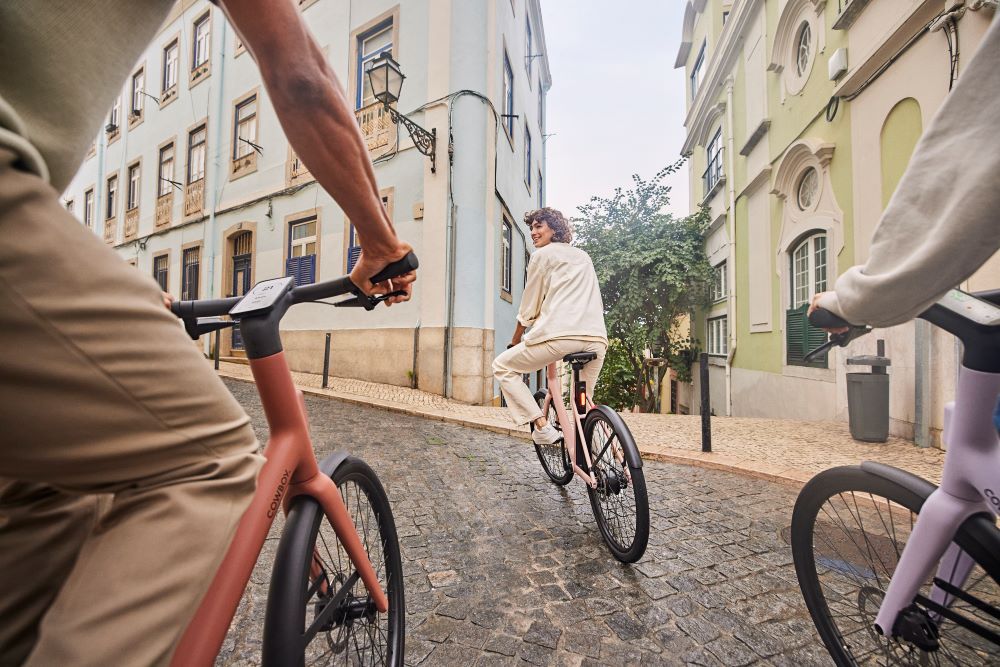
Designer Richard Bone puts his foot down at Cowboy. The latest creation from the Belgian electrically assisted bicycle (EAB) brand, co-founded in 2017 by Adrien Roose, Tanguy Goretti and Karim Slaoui, the C4 ST model is the result of team research conducted by this British man who is comfortable with all types of design.
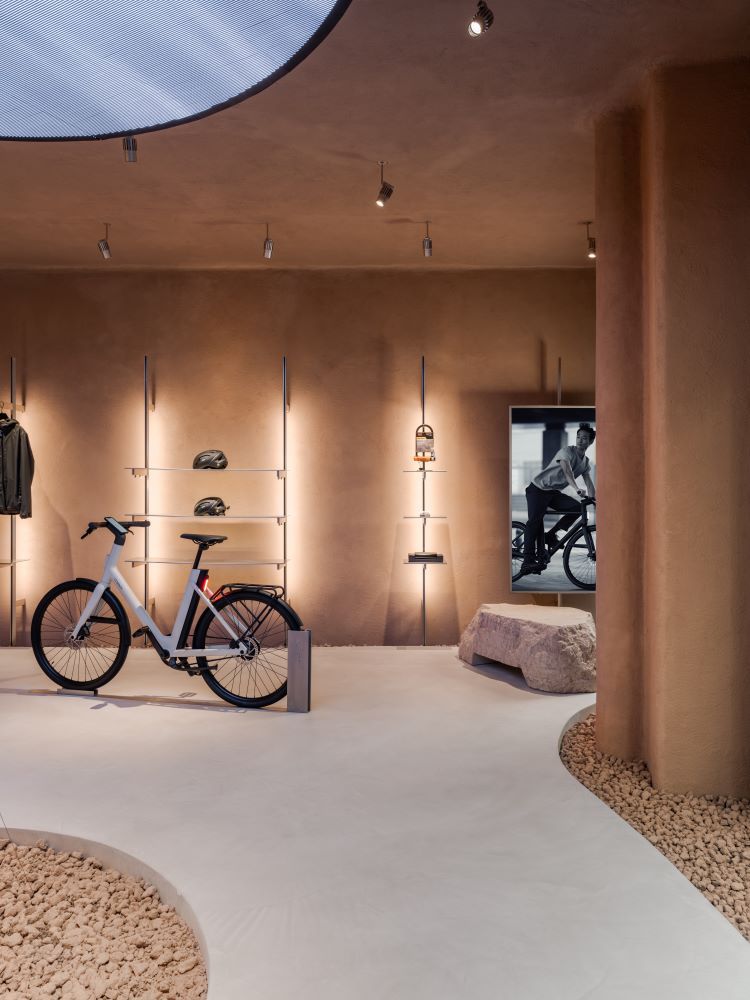
What is your background?
Before Cowboy, I studied automotive design at the Royal College of Art in London. The workshops were organised in close collaboration with various manufacturers. At that time I realised that the car industry was moving in a positive direction. Yet 15 years ago it was still producing fossil-fuel cars and very large SUVs, and nothing was fit for the real purposes.
What were your first steps in design?
I started almost 19 years ago in London, in the field of product and human services design. I worked for the large design agency Pearson Lloyd, which designs a lot of interiors and services for companies in the transport and health sectors.
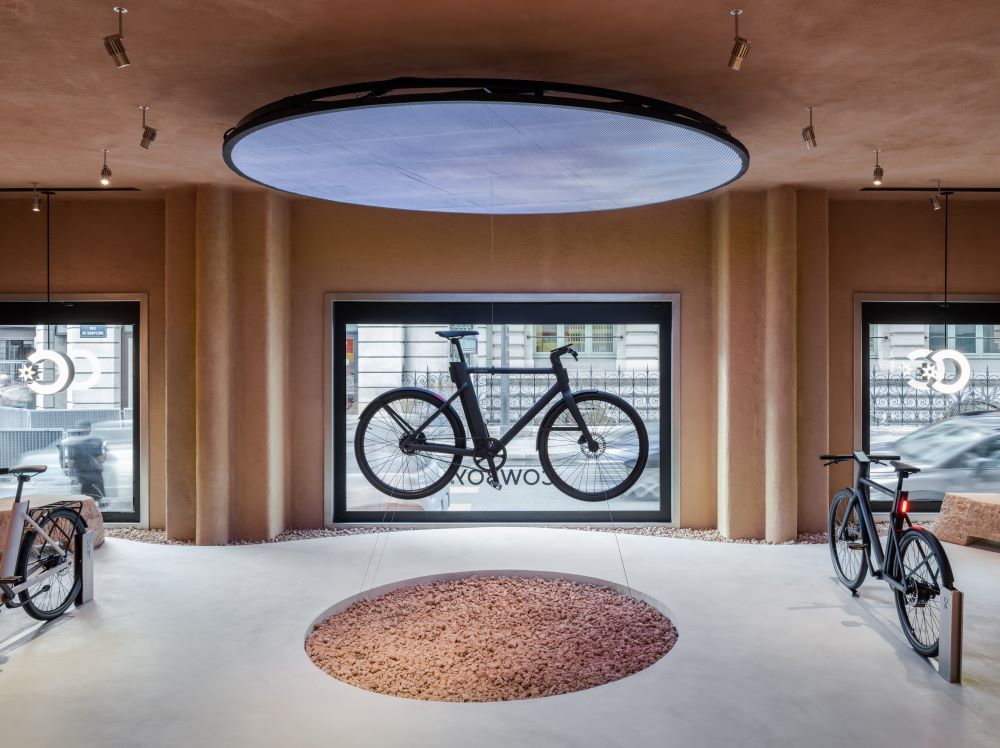
You have also lived in Japan. What did you learn there?
I moved to Tokyo to join the team of the Nendo design studio, founded by Oki Sato. I also often travelled to Paris, Milan, Copenhagen, for their various clients, especially furniture editors. For them, I worked on the interior design of the TGV, which will be launched in 2024. I learned a lot in Japan, such as the sometimes fragile relationship between the importance given to images and digital technologies and the development of products and furniture on a more human scale. To link the two and achieve a balance, the user experience is crucial – this is particularly the case in the field of transport (and Japan is a forerunner in this sector).
How do you see your work developing?
Thanks to these experiences, I think I now know what is essential, the value and the durability of a product: making sure that the experience is understandable, that the interactivity with the user is as fluid and intuitive as possible, and that finally, real answers to concrete uses – solutions – are integrated.
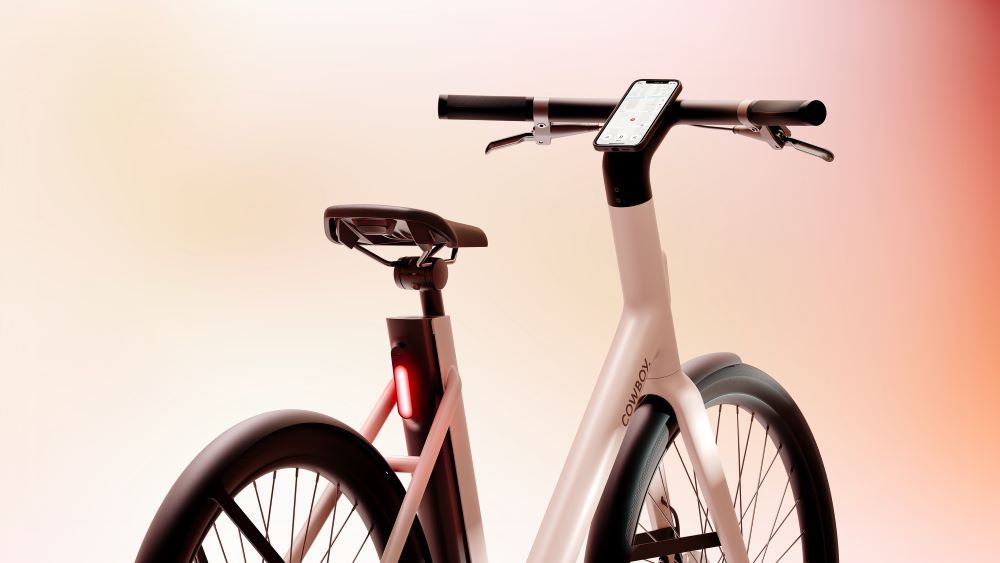
Were you a committed e-bike user before joining Cowboy?
I used to ride a second-hand bike. I was attracted to the pure design of the Cowboy high-frame bike, but I was sceptical about the riding experience it could offer… Until I actually used it and realised how intuitive it was. I get up every day with one small pleasure in mind: to use it to get around town efficiently. Especially since the Cowboy models have the new AdaptivePower technology: the speed of the bike adapts in real time to the road so the ride is smooth.
What was your opinion of Cowboy before working on it?
I liked what they were trying to do: make electric bikes accessible to a wider audience, not just a community of experienced cyclists. They managed to redefine the use cases and audiences for EABs, while keeping in mind the aesthetic aspect of the product with an incredible, well-crafted design. When they contacted me a year ago, they needed a new electric bike for their main target, urban riders. It was obvious that Cowboy had the capacity to grow and expand in the e-bike market, which is still a niche market.
What was the state of play in the company?
Cowboy was growing rapidly and was focused on building synergy between the design and engineering teams. One of the goals from the moment I arrived was to ensure that the brand’s design decisions were truly connected to its business model and production, right through to its marketing and retail spaces – hence the birth of the first Cowboy shop at Le Bon Marché in Paris. This location perfectly exposes the brand’s DNA.
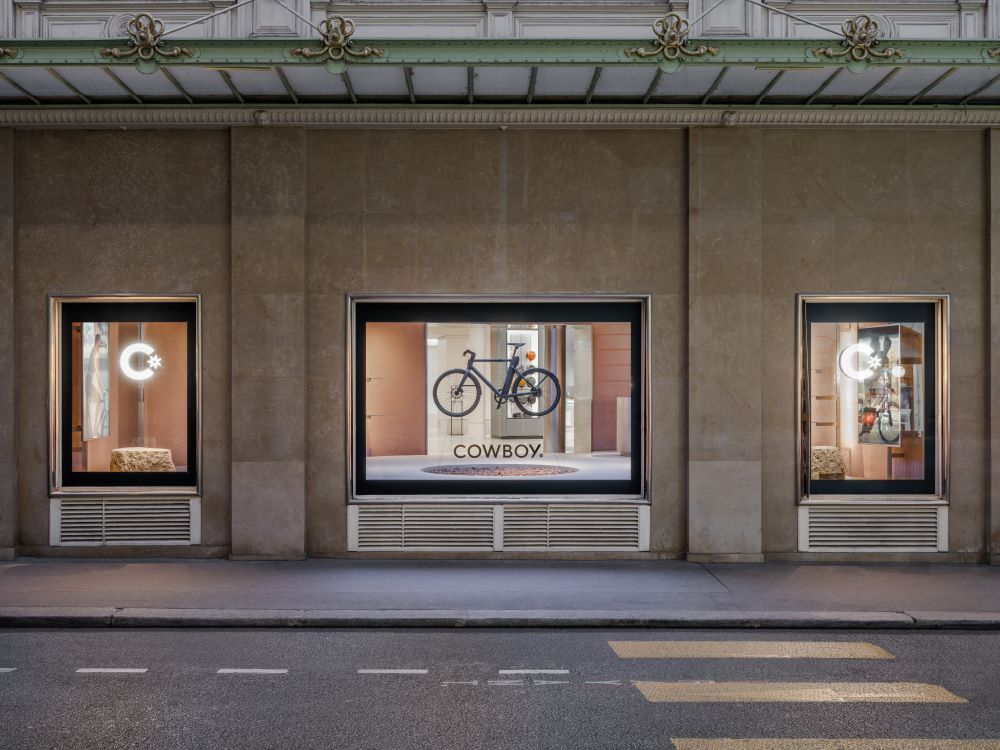
What were your inspirations for the new low-frame Cowboy bike, the C4 ST?
First of all, I spent a lot of time with the Cowboy team, while continuing to travel. My base is in Paris, where the Cowboy design studio is located, and this allows me to be in direct contact with the brand’s target audience. My first job as a designer is essentially to take the time to observe my surroundings: the people, the city and its architecture and layout. Also, living in a city at the forefront of creation, especially renowned for its luxury companies, allows me to cross points of view.
What do you observe?
I see that the Parisian cycle paths are increasingly used by electric bikes. For the moment, it’s an older generation that uses these bikes, but the younger generation is also gaining ground… Also, despite the decisions taken [the city of Paris is going to ban the use of electric scooters in its streets, editor’s note], the facilities and modes of urban transport are adapting to all-electricity, whether it’s bicycles or electric cars and their recharging stations. Getting around in the city has really changed and Paris is a reflection of this.
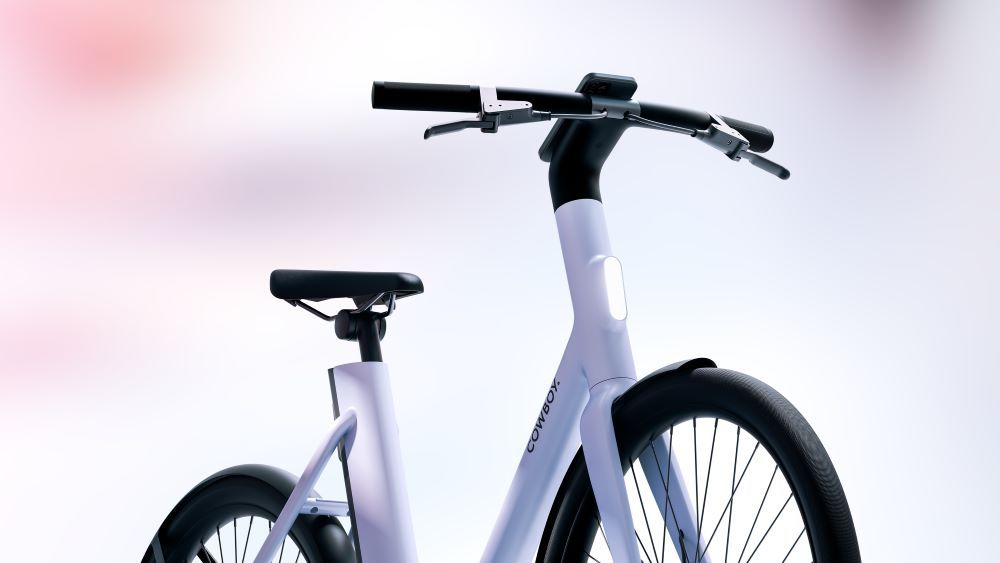
What do you learn from your peers?
For my designer friends in Paris, the luxury market is currently going too far in product design. For Cowboy, which belongs to the premium segment, I have to make sure that I always take into account the end user and his needs.
In terms of cycling, is Brussels or Tokyo comparable to Paris?
Brussels is a car-centred city with car-friendly policies, resulting in traffic jams and poor air quality. However, the city is marked by the use of bicycles, which are becoming increasingly important, but the infrastructure needs to be improved. It is this complication that also makes Brussels so charming. It is not like Tokyo, where everything is regulated to the millimetre, and where pedestrians and bicycles predominate in the neighbourhoods.
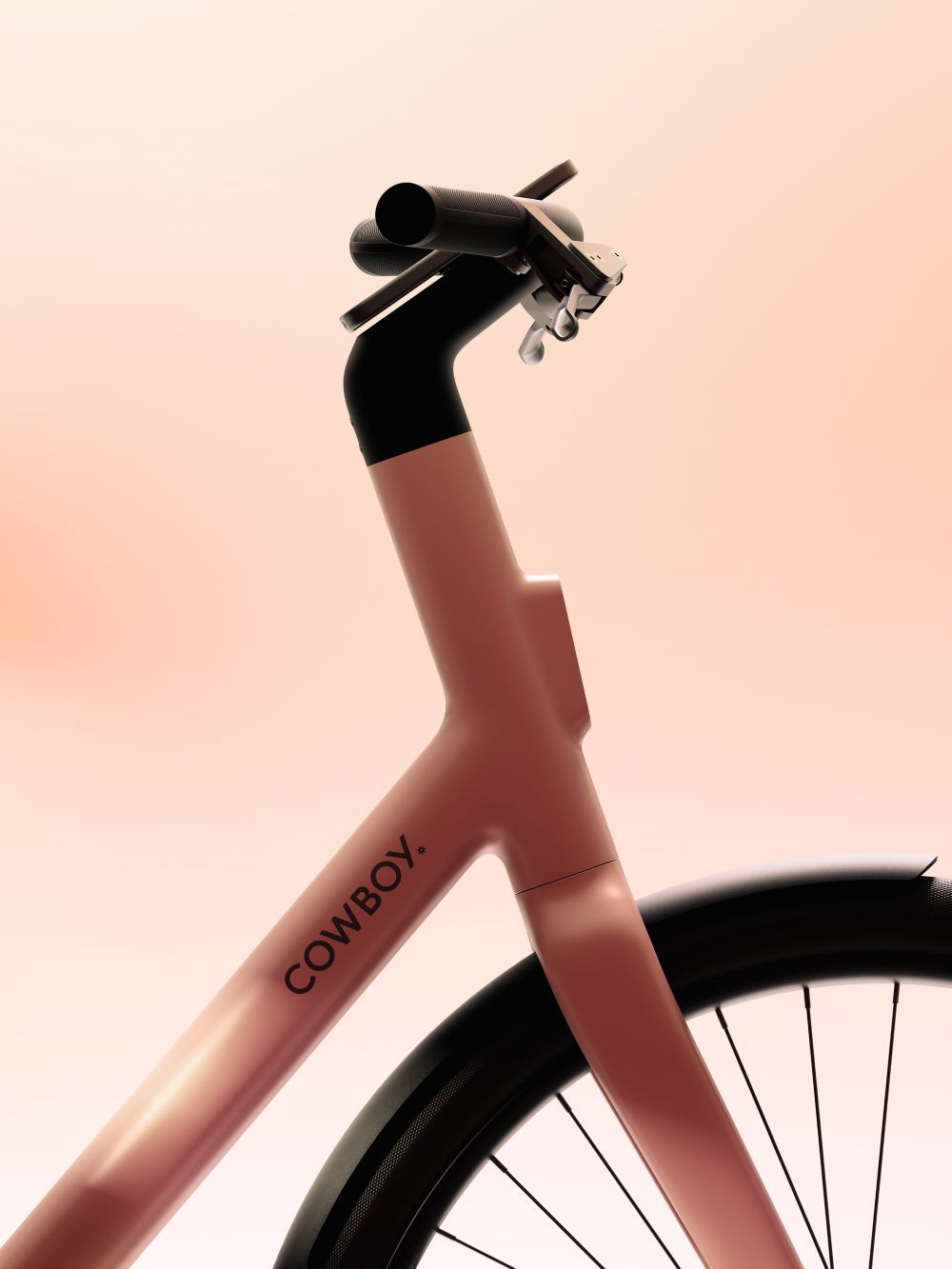
What is the typical Cowboy customer profile?
These are primarily urban people. The fact that the C4 and C4 ST batteries are removable and rechargeable anywhere targets people who live in flats or who may not have the space to recharge in car parks. And Cowboy appeals to consumers in the 30-50 age group who are looking for a riding experience that is only slightly different from that of a normal bike. For them, ease of use is a priority.
Which work tool do you consider the most important for you?
I believe that intuition is the most important tool for a designer. Once you have acquired a certain level in the profession, you can ask the engineering and marketing teams to reason and confront this intuition with their own experiences.
The colours of the new Cowboy C4 ST model evoke nature, not the often black and white world of technology. Why ?
Thinking about a product in colour requires opening your mind to things that are not necessarily tech-related. Cowboy’s colour palette used to be rather dark. It turns out that bikes are generally used more in summer than in winter. So with the design team I joined at Cowboy, we wanted to pay homage to nature and inject a summery mood into the collection. The colours Clay, Fig and Lavender in the new C4 ST model echo the world of earth and plants, as well as the current trends in fashion and decoration that are inspired by them. A lot of research has gone into the design of these colours. A Cowboy bike is still a guarantee of a clever, durable, easy to live with and joyful object!
